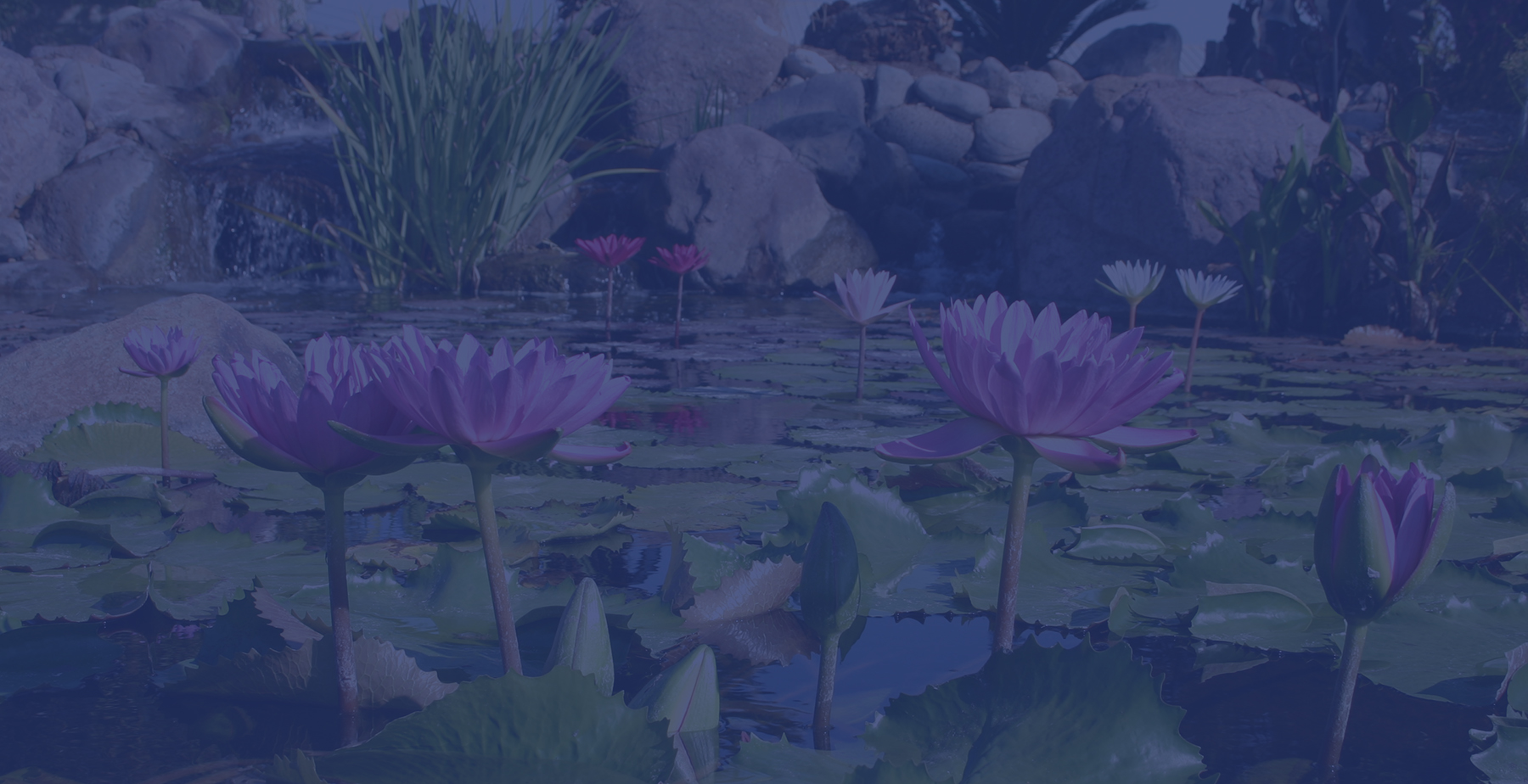Most healthy, natural-ecosystem ponds require minimal effort to maintain, aside from a thorough annual cleaning. When deciding the right time to clean your pond, there are two major considerations: biology and aesthetics.
Biology
One of the most important reasons to regularly clean out your pond is to provide the safest environment for your plant and animal life. Allowing debris and fish waste products to disrupt the natural balance of bacteria can be one of the most dangerous issues for your pond’s ecosystem.
Water Clarity Issues
Not being able to see the fish and plants in your pond clearly can be unsightly, but it can also be a sign of a more serious issue. Large amounts of leaves and other debris that are not properly removed can release tannins into the water, causing your pond to have a brown, murky appearance. An overabundance of organic matter can also affect the natural balance of your pond, reducing the oxygen level in the water and eventually causing harm to your fish and the pond itself.

Fish Waste and Sludge
If not properly regulated, fish waste can build up in your pond bed and eventually reach an unsafe concentration. There are natural ways to help regulate these levels, including not over feeding your fish and adding beneficial bacterial regularly to your pond. If you have too many fish, you will also find a buildup of sludge developing at the bottom of your pond. To keep your pond’s ecosystem balanced, you should remove this sludge regularly.

Aesthetics
Aside from having unhealthy water for your fish and plant life, brown and green water in your pond can be an eye sore. One of the biggest reasons people have ponds is to enjoy the sound and visuals created by water falls, streams, and lighting displays. They want to see their lights illuminate their beautiful fish and plants, not a pond full of brown, murky water!
Smell
One of the signs that your pond needs a thorough cleaning is the presence of an unpleasant smell, which is created by too much decaying matter. If you’ve ever smelled a swamp on a nice hot summer day, you know exactly the smell I’m talking about! The source of this smell is likely organic material like leaves and unmaintained aquatic plants, dead frogs and fish waste. One of the first steps in conducting a thorough cleanout of your pond is removing of all these materials.
Algae and “eco-slime”
A naturally occurring part of a properly balanced pond is slime algae (affectionately referred to as “eco-slime”). This blue or blue-green algae can cover the surfaces of rocks and everything else in your pond. It’s typically a mixture of bacteria, algae, and decomposing biological material.
This “eco-slime” is a normal part of any freshwater habitat and it’s not inherently bad for your pond; however, removing it from visible surfaces will make your pond water appear much clearer. The goal of removing this slime is to only clean the surfaces that are visible from outside the pond, which helps to clarify murky water will preserving the beneficial bacteria colonies on the bottom of the pond.
At Damascus Enterprises, we love getting elbow deep, sometimes literally, to help improve the look and function of our clients’ ponds. Keep in mind, however, that doesn’t mean eliminating all the sludge. Some sludge and slime in your pond is actually beneficial to your pond’s ecosystem. (After all, it’s a pond, not a pool).
When your pond is starting to get stinky, slimy, or sludgy, start thinking about conducting a through pond clean out. We enjoy getting our boots dirty while cleaning ponds and helping owners set up the right maintenance regimen to keep their ponds looking beautiful.
What to expect from a Damascus Enterprises Clean Out
Cleaning ponds is a dirty job, but someone has to do it!
Lucky for you, we love trudging through pond muck so you don’t have to! When you identify one or more of the symptoms listed above, call Damascus Enterprises and we can help repair the damage and get you back to enjoying your clearer and safer pond environment.
A typical clean out consists of the following steps:
- Pumping the water out of the pond;
- Safely removing fish and placing them into a storage tank;
- Pressure washing all the rocks;
- Washing mechanical and biological filter media;
- Fertilizing plants;
- Checking lighting systems; and,
- Inspecting the liner and mechanical equipment for damage or any issues that may arise.
When pressure washing your pond, we will only remove slime and scum from the visible surfaces and rinse out the bottom of the pond. We will intentionally leave a small amount of sediment in your pond to help maintain the beneficial balance of bacteria and nutrients in the ponds ecosystem. After cleaning, we will replace any plants, then refill your pond with a mixture of freshwater and recycled water from your pond (if it is reusable). This mixture helps the fish more easily acclimate to the cleaned pond. When returning your fish back into their cleaned pond environment, we introduce them slowly so they can adjust to the new water temperature. Even a few degree difference in water temperature can greatly affect your fish, if not acclimated properly.
Next, we add beneficial bacteria and a detoxifier to help improve the health of your pond. Water from city lines and even wells has heavy metals and chlorine. Pond Detoxifier removes and detoxifies chlorine, neutralizes ammonia and detoxifies and chelates copper and heavy metals that can harm pond fish and aquatic plants. Pond Detoxifier also allows some metals, like iron, to be used as a fertilizer, helping your plants to thrive.
Upon completion, we will fill out a report card to give you an update on the total number of fish transferred, pump and hardware information, lights and transformers information and the number of types of plants, as well as any recommendations moving forward. Because a clean out stirs up quite a bit of sediment and other debris, it may take 24-48 hours for your pond to clear after being refilled. This debris should settle to the bottom or be cleaned out by mechanical and biological filtration. Adding Beneficial Bacteria and other treatments will jump start that natural cycle to help keep your pond healthy and clean. The clean out process will also restart the nitrogen cycle in the ponds ecosystem.

Hiring Damascus Enterprises means not having to worry about anything related to the look, maintenance and health of your pond, fish and aquatic plant life. Our trained staff will provide all the supplies needed to bring your pond back to life. We will also discuss any comments, concerns or questions you might have about your pond or the cleaning process before we get started and throughout the process.
Why get stuck in the muck, when we can have you seeing things clearer?








